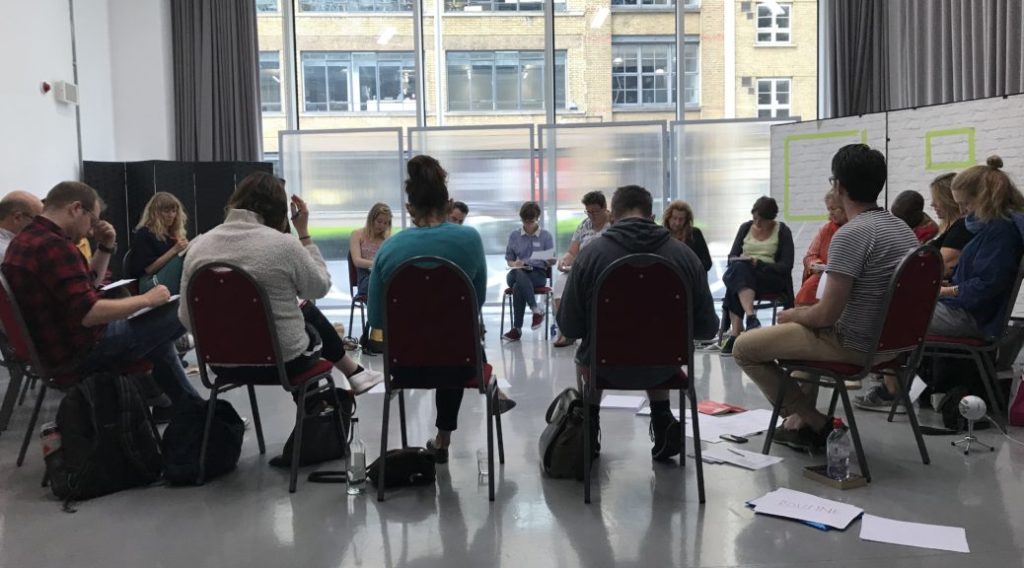After our members’ meetup and WrAP2019 feedback session earlier this month, we promised to follow up with those who attended by posting some resources to help with redrafting and the common challenges writers’ face when editing.
From the session, it was clear members of the group were struggling with similar things: from honing their structure to figuring out what to cut and what to develop, We hope this post will help you to overcome these challenges and kick start those redrafts!
Structure
Lots of you told us you were struggling with structure! But don’t fear – you can crack it!
We’d recommend reading John Yorke’s into the Woods and/ or Chris Booker’s the 7 Basic plots. If anything can help clarify structure, these books can!
Also remember that we have The Redrafting Toolkit on this website (it’s still active so you can revisit it if you need a structure recap!).
Subtext
Subtext was another hurdle which came up a lot during the session. It’s completely normal to overlook subtext in your first draft when you’re just trying to get your ideas down on to the page.
In your second draft, you can try developing subtext further.
Try this: take a scene from your play and underneath each line, write the subtext.. If there is no subtext (or it’s all the same as what is being said in the dialogue), you know you have some work to do.
Try rewriting the scene using ONLY subtext – the characters are not allowed to say anything that they really mean or want to say.
Now consider which bits you can add to your scene. Remember, audiences will be very astute at joining the dots, so don’t feel you need to spell everything out to them!
Another tip is to analyse the dialogue in your favourite TV shows. How much is left unsaid? What techniques are used to convey meaning through subtext?
Editing
What should you cut? What should you develop further? Cutting can feel like a risky business when redrafting – how do you know you’re not getting rid of your best bits?
Firstly, we’d recommend taking a look at structure. Once you have it all mapped out, consider your page count. Is your first act super long in comparison to the latter half of the play (common in first drafts, by the way!)? Do you spend enough time on the most dramatic scenes?
Think about the tension in your piece. You want to spend more time developing the most dramatic/ tense scenes and keep the less dramatic scenes shorter – this will allow you to build up the rhythm and the tension and give the audience more of what they want – drama!
Another useful editing exercise is to go through your dialogue and ‘action it’ or, give each line a verb. If you have lines which don’t seem to have a verb (that is, they’re not doing anything), cut them! After all, every part of your play should be driving the action forward!
And one last tip if you are a nervous editor. Start your second draft in a new document, that way you can retrieve anything you cut if you decide you want it back!
Reveal
Something else which came up in the session was when to reveal information to the audience, and how much should be revealed.
With information, you’ll want to beware of the dreaded exposition. Go back to the actioning exercise above. If any of your lines are simply there to convey information, think about how you can replace them with action instead.
Less is more when it comes to telling us what’s going on and you’ll be surprised what little amount of information an audience needs to piece things together. After all, part of the fun is the feeling of intrigue!
Take a look at the opening scenes to some films or plays. How much information are you told? What other information can you decipher from what you’ve been given? What kind of questions have been provoked? This exercise will help you to get a feel for how little needs to be revealed in order for the audience to make sense of it.
Also consider if and when you want to surprise the audience? If there is a big twist or reveal at the end, you’ll want to with hold information throughout the play. On the other hand, if you want to the audience to guess the outcome earlier, you’ll need to make sure that information filters through. Ultimately, you have the power to decide so make sure you plan and have clear reasons for your decisions.
Thanks!
Thanks to all those who made it to the members’ meetup! It was great to hear your work and get to know you better. We’re busy plotting the next event so watch this space and we hope to see as many of you there as possible next time.

